
Hall of Fame: Members

Hall of Fame: Members
CTA Hall of Fame
The CTA Hall of Fame honours Canadians who have made a positive impact on trapshooting in Canada and includes a category for the top Shooters and influential Contributors and Builders of our sport.
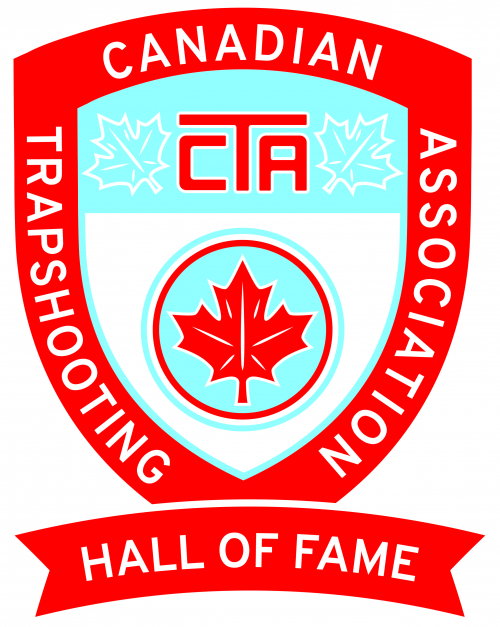
If you would like to nominate an individual for the CTA Hall of Fame, complete the CTA Hall of Fame form and submit to the CTA Hall of Fame Committee by the November 1 deadline.
Inductees for 2025
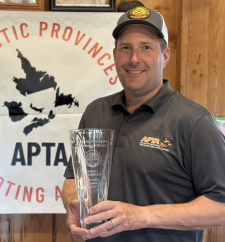
Andrea Bassan
Type: Contributor
Category:
Province: Atlantic Provinces
Since 1998, Andrea has dedicated his time to such positions as St. John’s Rod and Gun Club President and Trap Chairman, Atlantic Provinces Trapshooting Association President, CTA President, and Atlantic Provinces Delegate for the ATA and CTA.
Stay tuned for Andrea's complete biography.

Peter Tsementzis
Type: Shooter
Category:
Province: Ontario
Peter was first introduced to trapshooting in 1984, when he went to Hamilton Gun Club (his current home club) with his father, Chris Tsementzis Sr., to watch the Provincials.
Stay tuned for Peter's complete biography.
Inductees for 2024
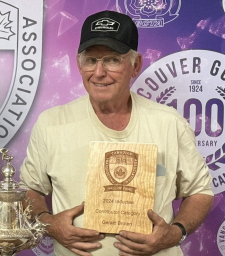
Gerald Broten
Type: Contributor
Category: Sr Veteran
Province: British Columbia
Jerry has been a dedicated ATA delegate and Vice-President of the BCTA, holding life memberships in both the ATA and PITA organizations. He has traveled extensively across Canada and the USA, often with his family, to participate in shooting events. Known for his hands-on approach, Jerry was frequently found fixing trap machines or performing gunsmithing on the tailgate of his truck, sometimes needing to be pulled away from helping others just to take his own turn at shooting.
He competed at more than 44 different clubs across North America, from Alaska to Hawaii and took on significant tasks at clubs beyond his own, helping to improve facilities and equipment to accommodate more shooters. Jerry was always ready to diagnose and repair trap machines or assist in any capacity needed to ensure the success of shooting events.
Jerry's contributions extended beyond his technical skills. He started G&R Sales, specializing in Kreighoff shotguns, gunsmithing and ammunition sales, often providing repairs at little to no cost. His generosity also led him to provide essential resources like targets and trap machines to support smaller clubs facing financial difficulties.
Together with his wife, Rene, Jerry raised four children while managing his businesses and volunteering thousands of hours at various clubs. His shooting accomplishments are impressive, with 444,100 PITA targets and 184,900 ATA targets, with a combined total of 629,000 targets.
Jerrys commitment to the sport went beyond the shooting range. He is known for his karaoke performances, spreading joy and camaraderie among fellow shooters long after the competitions ended. His passion and enthusiasm for the sport and its community have left a lasting impact, making him a deserving inductee into the CTA Hall of Fame. His contributions to trapshooting are and have been appreciated by all.
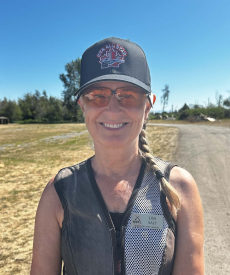
Lisa Salt
Type: Shooter
Category: Lady II
Province: British Columbia
While living in Vancouver and attending the University of British Columbia, Lisa spent 3 years of her trapshooting career concentrating on International Trapshooting. In 1985 she proudly won a bronze medal, along with her 2 female teammates, at the World Trapshooting Championships in Montecatini, Italy. Shortly thereafter she gave up the supposed fame and glory of international trap for the more social and friendly sport of American trapshooting.
Lisa has since won the Provincial Handicap (1997), the BC Ladies Provincial Singles title a total of 17 times, as well as the High All Around 24 times the Ladies Handicap 4 times and the Ladies Doubles 24 times. She has also won titles at the PITA Grand Pacific Championships, 3 doubles titles, 1 singles and the Ladies HOA and HAA 1 time.
She has 9 - 100 straights in singles to her name thus far. Lisa hit the 27 yard line in 2002 and has received many honorary punches from that spot. Lisa has made the BC Provincial All Stars 23 times, 21 as High Lady and twice on the Provincial First Team.
Lisa has recorded 26 years on the PITA All Star Team, achieving the top spot in first position on the Ladies 1st Team in 1993, 1994, 2004, 2008, 2009, 2010, 2011, 2012 and 2016. Lisa is the first Canadian Lady shooter to make the CTA All Stars at its inception in 2021 and she has repeated that achievement every year since, 3 times so far!
In 2001 Lisa held the BC Provincial High Handicap average.
Lisa’s trapshooting career highlights include travelling around and shooting all over Western Canada and the United States with her Dad and later with her husband Gord Fowler. Lisa shot her 100,000th PITA target at the North Okanagan Trap and Skeet Club in 2004.
In 2007 Lisa was inducted into the PITA Hall of Fame and at that time, was the youngest inductee to achieve the honour. In 2012 Lisa was the first Lady shooter to receive the PITA AA27AA recognition. In 2019 she shot her 200,000th PITA target, again at NOTSC. She shot her 50,000th ATA target at Redlands CA in December 2023.
AVERAGES:
Between 1993 and 2023, Lisa’s PITA aggregate average has only dropped below 90% 4 times and not once dropped below 89%. She has amassed 27 seasons aggregate averages of 90% or better. 17 of these 91% or better, 3 of them 92% or better.
In Doubles Lisa has 12 years of 91% or better, 2 years of 92% or better, 3 years of 93% or better and 2 years with a 94+ average. These top years weren’t light target years either; she hit a 94.48 on 4150 Doubles targets and a 94.36 on 1650 targets.
Lisa’s best Handicap season was 2001 when her average was 90.18 on 1700 targets. This was the year she held the Provincial high average for Handicap in BC.
Lisa has shot over 210,000 PITA targets but she also shoots a significant number of ATA targets. At the time of research, Lisa had registered 48750 ATA targets with lifetime averages of:
94.94 SINGLES
88.20 HANDICAP
91.38 DOUBLES
Her Aggregate Lifetime ATA average is 91.51. Her two highest aggregate averages were in 2017, 93.57 on 3050 targets and 2015, 93.02 on 3600. Both from the 27 yardline. Over her PITA and ATA career Lisa has recorded an incredible 33 seasons with aggregate averages of 90% or better, over 2/3rds of them while standing at the most humbling place on the trap line, the 27 yard line.
Lisa’s father, Art Salt was a founding member of the North Okanagan Trap and Skeet Club and Lisa has been an active volunteer and supporter of the club throughout her shooting career. She is currently the club secretary and has been since 2010.
Trapshooting for Lisa has also really been a family affair; with at one point no less than 8 close family members all shooting, her Dad of course, the founding patriarch; Art Salt, her husband Gord, her sister Terry and brother in law Bruce Davies and their sons, Lisa’s nephews; Jared, Dustin and Cody.
All these achievements and Lisa has remained humble, a friendly face wherever you might run into her, she is welcoming and encouraging to new shooters and seasoned claybusters alike!
One of the nicest people you could hope to run into at a trap club.
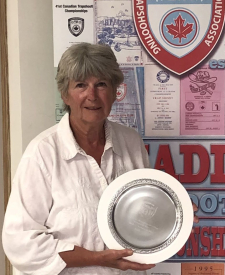
Dianne Wood
Type: Shooter
Category: Lady II
Province: Ontario
Dianne shot her first 100 straight in Singles at the Edmonton Gun Club during the 2004 Canadian Trapshooting Championships and was very proud to have her name added to the club plaque acknowledging shooters that completed the milestone at the club. Dianne was inducted into the Ontario Trapshooting Hall of Fame 2013 and completed her goal of shooting trap in every province in Canada. She did that in 2018 while attending the Atlantic Provinces ATA Provincial Shoot in Yarmouth, Nova Scotia with a quick detour to Prince Edward Island.
Dianne lived in London, Ontario and shot at the Crumlin Sportmen’s Association. She registered her first ATA target in 1980 and attained a lifetime ATA registered target count of 71 800 Singles with a 93.41 average, 63 650 Handicap targets with an 85.08 average and 40 200 Doubles with a 77.87 average. Dianne’s longest handicap yardage assignment was the 25.5 yard line. She got there with a ½ yard punch in 2019 with a 96 at the Missouri Trapshooting Association in Lynn Creek, Missouri.
Dianne and husband Jim (past CTA President and Canadian Champion) attended shoots all over Canada and in the United States. Dianne’s favourite places to shoot were the Canadian Trapshooting Championships no matter the location, Lynn Creek, Missouri and the Atlantic Provinces ATA Provincial Shoot.
Sadly, Dianne passed away on December 23, 2023, just a short time after a cancer diagnosis. True to Dianne’s character, she remained positive and determined to fight until the very end. Dianne’s celebration of life ceremony drew family, friends, and shooters from all over. The Dianne Wood Memorial Shoot held at the Crumlin Sportsmen’s Association threw over 22 000 targets and had 16 squads of Dianne’s friends from far and wide register for the shoot.
Inductees for 2023
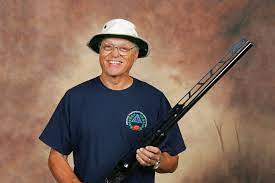
Harry Humby
Type: Contributor
Category:
Province: Manitoba
Harry participated in his first ATA shoot in 2007. During the years that followed, up until the time of his death from pancreatic cancer in 2022, he won more than 160 awards.
Shooting in Manitoba, at his home club, Winnipeg Trap and Skeet Club, and elsewhere around the province, Harry acquired many treasured trophies and, more importantly, many good friends.
In Manitoba Provincial Trapshooting tournaments, Harry’s highlighted wins include the Singles Veteran Championships in 2012 and 2013 and five Singles Senior Veteran Championships between 2015 and 2022. At the Canadian Trapshooting Championship in 2010 he won a Handicap Veteran award and in 2012 received the Handicap Veteran, Singles Class A, and the High All Around Veteran awards.
Harry also participated in American trapshooting tournaments. His most prized awards in Missouri State Shoots were for Singles AA Class in 2012 and Singles Senior Veteran in 2017. At the Southern Grand in Florida, he won a Singles Senior Veteran award in 2014. In Casa Grande, Arizona, Harry’s name was carved on a wooden wall plaque in 2020 because he shot 100 of their unique, green targets, straight.
At the Tucson Spring Grands, Harry’s best achievements were winning five Singles Class A awards and two Singles Senior Veteran awards in the same tournament (2020). In the Singles Championship, Harry was one of only four shooters (out of a total of 587) who shot 200 straight. In recognition of his being awarded the Singles Senior Veteran Champion, his picture appeared, along with those of the other winners, on the front cover of the April 2020 Trap & Field magazine.
Harry competed in 11 Grand American World Trapshooting Championships, winning a total of 22 awards. His most prestigious wins there were the Grand American Handicap Veteran Championship (2011), the high Canadian award (2011), a Champion of Champions Runner-up (2015), and two Singles Senior Veteran awards in 2017.
Between 2010 and 2020, Harry shot 100 straight 37 times and 200 straight four times. He attained the 27 Yard Line in Handicap in 2013. By 2019, he had shot 50,000 ATA registered singles targets, and, by 2022, he had shot 50,000 ATA registered doubles targets. Trap & Field magazine wrote and published an article about Harry in their November 2017 edition.
Harry’s love of trap shooting and the skills that he developed as a high-school teacher and vice principal (28 years), a weekend wedding photographer (20 years), a volunteer swimming instructor (15 years), and a member of the Canadian board for a Christian orphanage/boarding school in Uganda (17 years), helped him make a meaningful contribution to the sport of trapshooting.
From 2014 to 2022, Harry was a working member and the trap chair of the Winnipeg Trap and Skeet Club board. During the last three of those years, he was its president. He also served on the board of the Manitoba Trapshooting Association for four years and then, for two years, as its president.
Harry was a certified ATA/NRA Level I coach. In 2019, he taught a coaching course in Brandon and in Winnipeg. The shooters who completed this course received Level 1 Trapshooting Coach certification which was recognized by both MTA and Sports Manitoba. For Harry, a highlight of every week during the spring season (from 2014 to 2022) was helping to coach sub juniors and juniors at Winnipeg Trap and Skeet Club.
Harry and his wife Francine, his three children and their spouses, and his seven grandchildren, were delighted when his name was added to the Manitoba Trapshooting Hall of Honour in 2022. The Harry Humby Silver Shoot that Winnipeg Trap and Skeet Club held, in Harry’s memory, was wonderful. The Humby family are also truly honoured by Harry’s 2023 induction into the Canadian Trapshooting Association Hall of Fame.
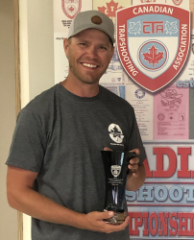
Patrick Lamont
Type: Shooter
Category:
Province: Manitoba
One of just two shooters to have won all five championship events at the Grand American, Pat has collected 11 championship rings at the tournament. In 2008 he topped the Grand American Handicap and All-Around. His 100 from the 27-yard line earned him the handicap crown outright and completed his ATA Grand Slam and Grand American Grand Slam. He repeated the HAA win the following year in 2009 and in 2017. He captured Clay Target titles in 2016 and 2022 and topped the Doubles Championship in 2017. High-Over-All wins came in 2017, 2018 and 2022.
He has claimed numerous Grand American High Canadian trophies since 2002, including 12 in the Clay Target, five in the Grand American Handicap, seven in the Doubles, 15 in the All-Around and 16 in the HOA. He has been past GAH winner seven times. He was Zone Champion of Champions victor in the 2019 Clay Target race. In 2013 he was a member of the winning Zone teams in both singles and doubles. He had another singles team win in 2016 and doubles in 2018.
Pat blasted all 100 during the 2017 President’s Handicap to head the event. He was high gun in the 2011 Champion of Champions and runnerup in 2010 and 2018. He and dad Rob secured the Parent-Child Trophy in 2005, 2011 and 2013 in addition to tying for it in 2003.
His 21 twin-bird centuries at the Grand ties for 10th on the all-time list.
He has won the Spring Grand doubles title once and the all-around and high-over-all crowns twice each.
At the ATA Central Zone Shoot, he has collected 12 titles, including two singles, one handicap, three doubles and six all-around. He set the all-around high of 398x400 in 2013.
Pat has 44 Manitoba provincial titles over the field, including 14 each in singles and doubles plus five handicap and 11 all-around. He swept the championship events in 2009 and 2011. His category singles crowns include the 1998 and 2000 sub-junior and 2001 junior.
At the Canadian Trapshooting Championships, Pat holds 43 Championship titles including 9 Singles (one as a junior and 5 with perfect 200/200 scores), 11 Doubles titles (6 with a perfect 100/100 scores), 3 Handicap, 9 High All Around and 11 High Over All. Pat is one of only 3 Canadians to win all 5 Championship events.
Pat has placed on the ATA All-American Team six times between 2003 and 2023, including one junior and five open. He also has four Trap & Field All-Around Average Awards, and his 2013 singles average of .9972 ties for eighth on the all-time list. Pat has led the association in singles average three times and handicap twice. He has posted a 99%+ singles average (on a minimum of 2,500 targets) 12 times.
In 2002 he reached AA-27-AA status and AAA-27-AAA status in 2015.
Pat is also very active on the organizational side of the sport. He has served as president of Brandon Gun Club for over 10 years and has been Manitoba’s ATA Alternate Delegate for more than 15 years.
Pat credits his dad’s coaching for much of his success in trapshooting. During the CTA Hall of Fame Induction, Pat thanked dad Rob, and his family for their overwhelming support. Pat also considers being inducted into the CTA and ATA Hall of Fame the highest honor he could have in the sport.
Credit: Biographical information sourced and used with permission of the ATA Trapshooting Hall of Fame.
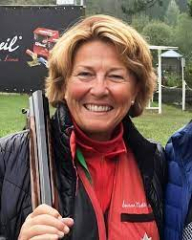
Susan Nattrass
Type: Shooter
Category: Lady II
Province: Alberta
Susan’s shooting career has spanned decades and includes wins at the provincial, national, Amateur Trapshooting Association (ATA), Olympic, and World Cup levels.
Susan has been an instructor, administrator, lecturer and consultant in physical education and sports psychology since 1972 and earned her doctorate from the University of Alberta in 1987. Since 1996 she has been residing in Washington State, conducting research in osteoporosis at the Pacific Medical Center in Seattle.
Provincial Trapshooting Titles
In Alberta Provincial ATA trapshooting competition, she was Lady singles titlist from 1969 to 1974, and from 1980 to 1983. In 1985 she posted a record 199 for the Ladies’ title, and won again in 1988. Two years later she captured the runnerup award.
Susan also has 3 Ontario titles from 1976 through 1978.
While living in Nova Scotia during the 1990s, Susan won five Atlantic Provinces ATA championships. In 1992 she was singles and all-around titlist, and took home the Lady crown in 1991, 1993 (for a record 194), 1994 and 1995. In 1995 she also collected the ATA runnerup award after a tie for the doubles title.
Canadian Trapshooting Titles
At the age 17 Susan won the 1968 Canadian Handicap Champion and in 1979 won the Ladies’ singles, high-over-all trophy, and high-all-around crowns. She has won the Canadian Ladies’ 16-yard championships in 1970, each year from 1974 through 1979 and again in 1980, 1982, and 1987.
She has also won many top Lady category awards in Canada’s national trapshooting championships: 1969 handicap and HOA; 1980 doubles and all-around; 1982 all-around and HOA; 1983 handicap, all-around and HOA; and 1987 doubles and all-around.
ATA Grand American
Susan captured several major trophies in ATA competition during 1969. That year she won the Golden West Grand Handicap Championship with 99 from 21.5 yards and five Ladies’ Grand American awards—including the All-Around crown with 379x400 plus shootoff.
Susan was Grand All-Around titlist again in 1972, 1976 and 1979, and she collected High-Over-All championships in 1972, 1974 and 1976. She won consecutive Doubles crowns in 1972, 1973 and 1974.
Susan won the 1977 Clay Target title, and she recaptured it in 1979. She also earned women’s AA laurels in the Class Singles in 1973, 1976 and 1977. In the Dayton Homecoming she was Lady champion in 1970, 1972, 1973 and 1980.
She was Ladies’ Champion of Champions in 1974 for a perfect century and again in 1975 and 1976. In the 1976 and 1978 International championship events, she collected category honors.
In the 1995 Grand American President’s Handicap, Susan won the Ladies crown with 97 from the 26. Her other handicap awards at Vandalia have come in preliminary events in 1980 and 1982.
Between 1969 and 1987 Susan has collected an additional 23 Grand American awards.
ATA Recognition
Susan was ATA women’s singles average leader in 1970, 1973, 1974, 1976 and 1977, and headed doubles standings in 1974 and 1975. She captured the four top women’s Trap and Field All-Around Average Awards between 1973 and 1976, and second-place ladies’ honors in 1982.
Susan was named to 14 All American women’s teams from 1970 through 1983; co-captained the 1973 team and captained those from 1974 through 1978.
Olympic and World Cup
In 1976, Susan earned the No.1 spot on Canada’s two-member Olympic team to become the first woman in Olympic history to compete in the trapshooting event. In both 1988 and 1992 she filled one of the six women’s positions available, and she was top woman in the open trapshooting event both years.
At World Championships from 1974 through 1981, she won six gold medals and set four world records, including a 195 in 1978 which remains the high mark on 200 targets. Additionally, between 1971 and 1991, she collected three silver and three bronze medals.
At World Cup competitions from 1985 to 1995, Susan has won two women’s Double Trap gold medals plus numerous silver and bronze awards. Additional International shooting honors in her collection include women’s Double Trap silver at the 1995 Pan Am Games and women’s gold at the Grand Prix of Nations, 1984 through 1986.
Recognition
Susan has been inducted into the Canada and Alberta Sports Halls of Fame, the Alberta Provincial Trapshooting Hall of Fame and the ATA Trapshooting Hall of Fame.
Susan has also received many awards and honors, including the Lou Marsh Trophy as Canada’s Athlete of the Year, the Velma Springstead Trophy as Canada’s Female Athlete of the Year, the Shooting Federation of Canada’s Female Athlete of the Year and Field & Stream magazine’s Rookie of the Year.
Credit: Biographical information sourced and used with permission of the ATA Trapshooting Hall of Fame.
See All HOF Members